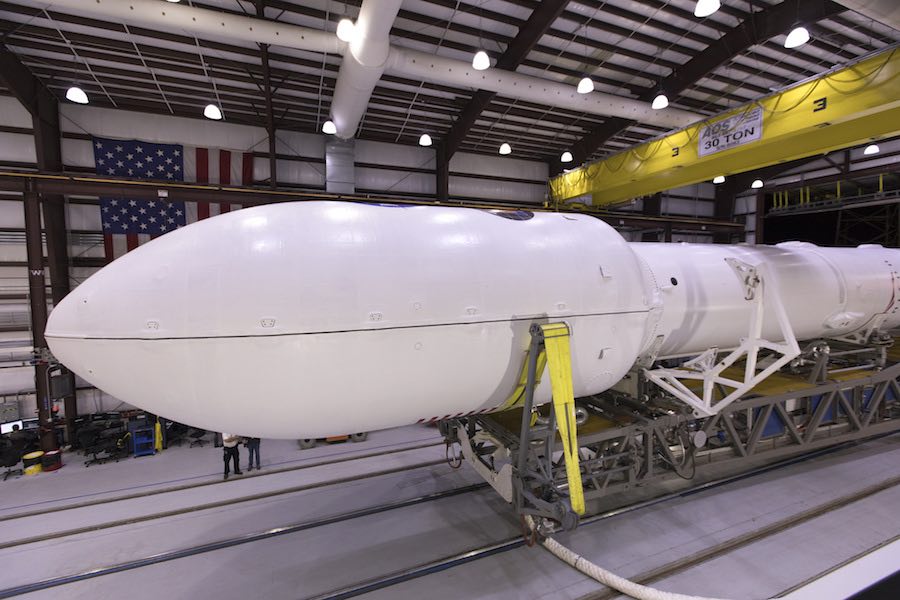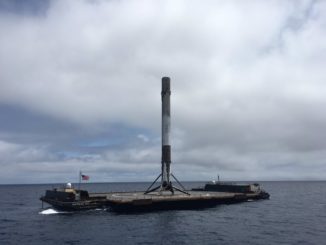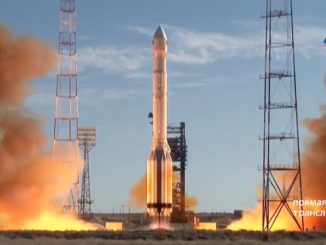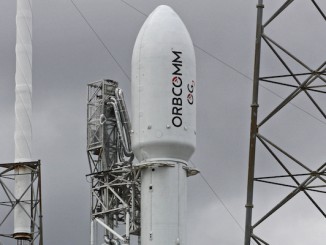EDITOR’S NOTE: Updated Jan. 17 with new launch date of Jan. 21. Updated Jan. 18 with Crew Dragon abort test delay to Jan. 19.

SpaceX plans to launch its next group of Starlink broadband satellites aboard a Falcon 9 rocket as soon as Tuesday, Jan. 21, from Cape Canaveral, two days after the company is scheduled to launch a modified Falcon 9 booster from a separate facility at the Florida spaceport to test the Crew Dragon spaceship’s emergency escape system.
SpaceX’s ability to achieve back-to-back launch schedule hinges on several factors, including an expected test-firing in the coming days of the Falcon 9 booster slated to fly on the next Starlink launch.
But assuming everything goes according to plan, SpaceX aims to perform launches from two pads on Florida’s Space Coast as soon as Sunday and Tuesday.
The Starlink mission — SpaceX’s fourth launch dedicated to the broadband network — was previously scheduled for Monday, Jan. 20. But sources said Friday the launch was pushed back to Tuesday.
And the abort test was originally set for Saturday, but rough seas in the Crew Dragon splashdown zone east of Florida’s coast forced SpaceX to delay the flight to Sunday.
SpaceX has already test-fired the Falcon 9 booster assigned to the Crew Dragon capsule abort test at launch pad 39A at NASA’s Kennedy Space Center.
Technicians inside a hangar near pad 39A attached the Crew Dragon spaceship to the Falcon 9 rocket this week, in advance of its return to the launch complex before a countdown rehearsal Friday, during which two NASA astronauts will practice launch day procedures before climbing aboard the next Crew Dragon spaceship for a flight to the International Space Station.
The Falcon 9 is scheduled to lift off from pad 39A — without astronauts on-board — during a six-hour window opening at 8 a.m. EST (1300 GMT) Sunday. About a minute-and-a-half after launch, the first stage’s nine Merlin 1D engines will be programmed to switch off, and SuperDraco thrusters on the Crew Dragon capsule mounted atop the rocket will ignite to propel the human-rated ship away from the Falcon 9.
The maneuver will demonstrate the Crew Dragon’s ability to carry astronauts away from a launch emergency, and builds on a pad abort test in 2015 to simulate the Crew Dragon’s abort system performance during an emergency before liftoff.
SpaceX will recover the Crew Dragon capsule from the Atlantic Ocean after it splashes down under parachutes around 20 miles (32 kilometers) offshore. The Falcon 9 rocket, flying with a previously-used first stage booster, is expected to be destroyed.
Meanwhile, teams at pad 40 at Cape Canaveral Air Force Station — located a few miles to the south of pad 39A — are preparing a separate Falcon 9 rocket for liftoff as soon as Tuesday, Jan. 21.
The Jan. 21 launch will haul the next batch of approximately 60 Starlink satellites into orbit for SpaceX’s global broadband Internet network. Assuming the mission remains on schedule, liftoff time Jan. 21 is expected at 11:59 a.m. EST (1659 GMT).
The two upcoming launches from Florida’s Space Coast will mark the second and third missions of the year for SpaceX, which says it could perform 35 or more launches in 2020, including flights carrying new Starlink broadband satellite into orbit as often as every two weeks.
SpaceX conducted 21 launches in 2018, the most missions in a single year in the company’s history. The company launched 13 missions last year.
The dual launches planned by SpaceX in the next week are not the only major activities scheduled at Cape Canaveral.
United Launch Alliance plans to roll an Atlas 5 rocket out of its vertical hangar at pad 41 — located between SpaceX facilities at pad 39A and pad 40 — as soon as Monday for a practice countdown Tuesday, Jan. 21, ahead of the launcher’s scheduled liftoff Feb. 5 with the joint NASA-European Space Agency Solar Orbiter mission, a robotic science probe designed to observe the sun.
Email the author.
Follow Stephen Clark on Twitter: @StephenClark1.



